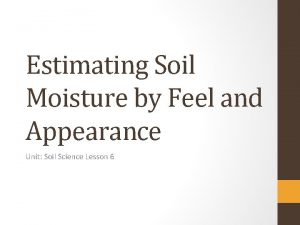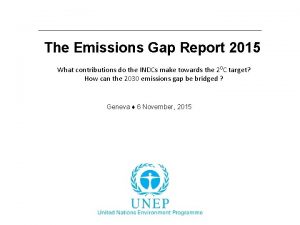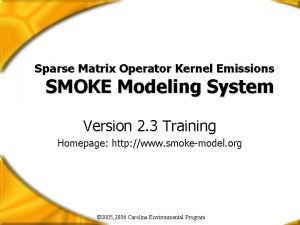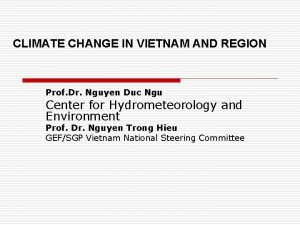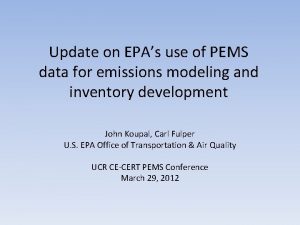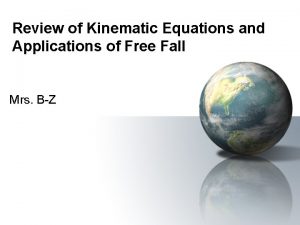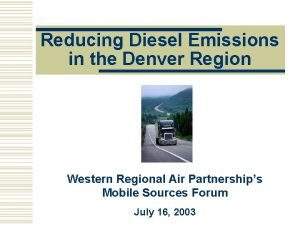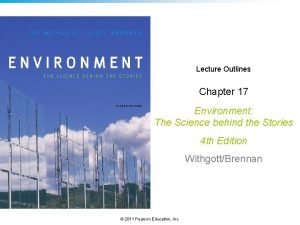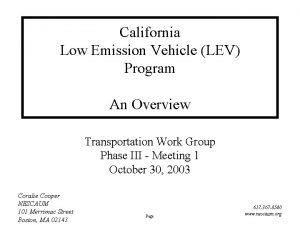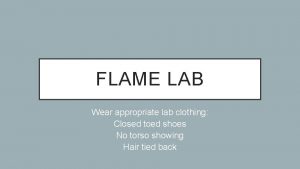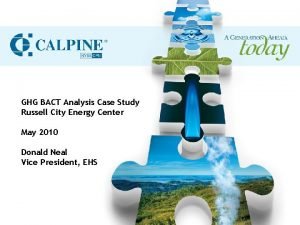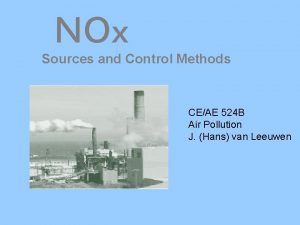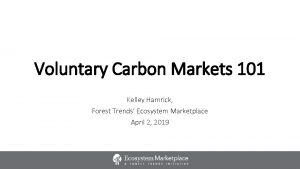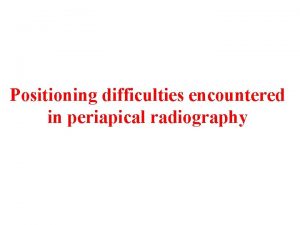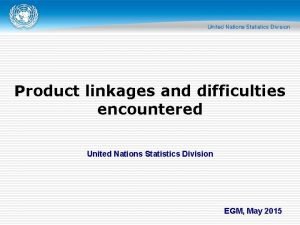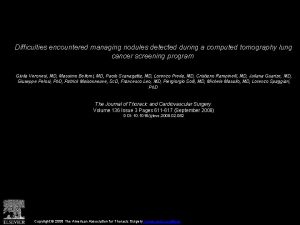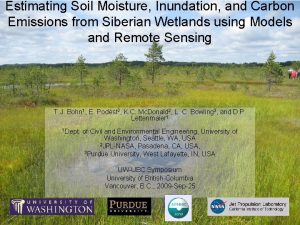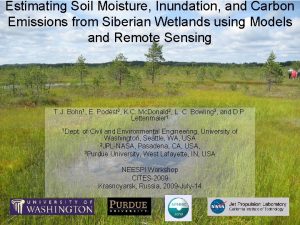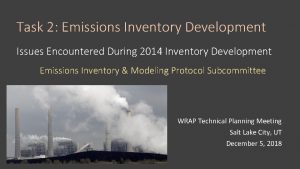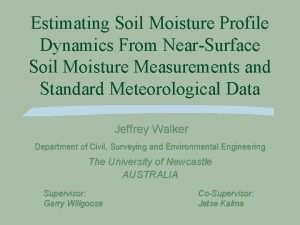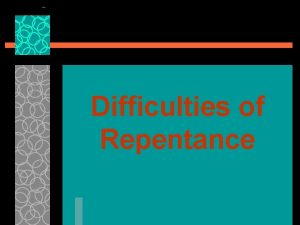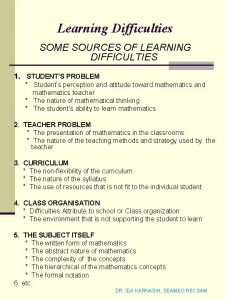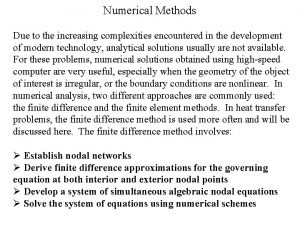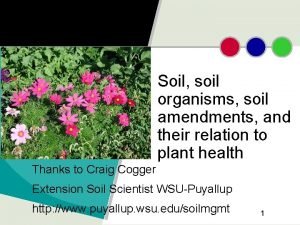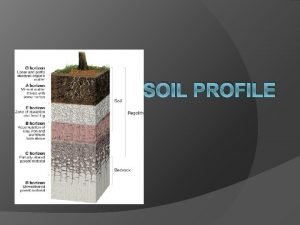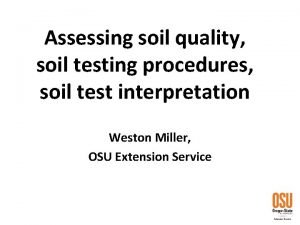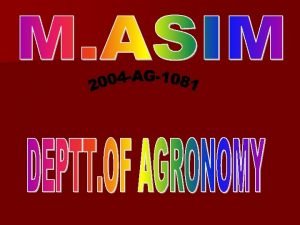Difficulties Encountered in Estimating Soil Emissions due to




















- Slides: 20

Difficulties Encountered in Estimating Soil Emissions due to LUCF Gary W. Theseira Forest Research Institute Malaysia Kuala Lumpur, Malaysia









Tropical Soils: • Tropical climates – – High year-round temperatures High rainfall High biomass production High decomposition rates • Tropical soils are: – Highly weathered – Low in organic matter – Not normally considered a significant sink for carbon • There are, however notable exceptions …

Soils with significant Organic Carbon content: • Peat swamps (Histosols) – Accumulation of organic matter under fresh-water swamps or soils with a water table close to the soil surface • Bris Soils (Spodosols) – Accumulation of organic matter due to the presence of a fluctuating water table within a deep, sandy soil • Highland organic soils (Histosols) – Accumulation of organic matter above the soil surface due to low night temperatures that reduce decomposition rates.

Extent of Peat Swamps in Malaysia • Peninsular Malaysia • Sarawak • Sabah 793, 000 ha 1, 466, 000 ha 86, 000 ha • Total of ca. 2. 5 million ha • Comprise 7% of the total land area

Properties of Peat Swamps in Malaysia • Developed during comparatively recent times – Carbon dated ca. 5400 y. b. p. • Formed under poorly drained terrestrial conditions rather than a permanent water body • Profile – Upper layer – Middle layer – Bottom layer 20 to 30 cm thick 30 to 40 cm thick variable thickness sapric o. m. hemic o. m. fabric o. m. • Overall depth of the peat may reach 17 m (Anderson, 1983)

Utilization Status of Peat Swamps in Malaysia • Primary use still peat swamp forest • Little more than 10% converted for agriculture, however … • Some located within regional agricultural development schemes – Johor Barat – Endau-Rompin • > 50% of project area located on peat soils • Located primarily in Peninsular Malaysia

Sources of Uncertainty in Utilization Status of Peat Swamps in Malaysia • How do we estimate land area under different and changing use: • Steady-state single-use – Non-utilized – Low-impact use – Intensive use • Land in transition/multiple-use – Gradual change & small land parcels – Catastrophic change • INTENSIVE/EXTENSIVE DRAINAGE • PEAT FIRES • Illegal or unreported land use change negligible emissions or net sink low emissions high emissions

Sources of Uncertainty of Emissions from Peat Swamps • How do we estimate emissions from peat soils associated with: • Logging – Selective logging – Clearcut logging • Agriculture – Subsistence – Commercial vegetable and fruit production – Oil palm production • Other – Fishing – Fish farming – Fuelwood collection

Drainage and Subsidence Measured subsidence data for Sarawak Source Tie and Kueh (1979) Subsidence (cm/year) Initial year 1 and 2 (consolidation) After year 2 (oxidation & shrinkage) 50 6 Yogeswaran (1990) 16 Agric. Research Station Sibu 4. 4 a Salmah (1998) 5 Chin and Poo (1991) 6 – 35 b a. Average subsidence rate over the period 1983 – 2000 b. Higher values in the vicinity of the drains (Source: PS Konsultant and LAWOO, 2001)

Complementary Verification Technologies • Modelling techniques for estimating oxidization rates given different rates of water-table recession • Ground-penetrating radar to estimate water table depth and overall peat thickness • Use GIS/thermal imaging to characterize peat swamps – – Hot Warm Ambient Cool peat fires dry edge peat swamp surface water

Solving Administrative and Communication Issues between Government Ministries • Consolidating Natural Resource and Environmental agencies under a common ministry • Mandate from the Prime Minister to Improve Communication and Strengthen Cooperative Ties between Environmental, Industrial, Technological and Economic Planning ministries

International Cooperation • Easier said than done • Always torn between ‘bottom-up’ and ‘top-down’ • Subject to Bureaucratic Inertia • Optimistic • ‘Small steps & Slow gains’ approach • Persistent
 Estimating soil moisture by feel and appearance
Estimating soil moisture by feel and appearance Types of powders in pharmacy
Types of powders in pharmacy Living soil vs dead soil
Living soil vs dead soil Living soil vs dead soil
Living soil vs dead soil Due're/due opposti
Due're/due opposti Principio di conservazione della quantità di moto
Principio di conservazione della quantità di moto Figura con 4 lati
Figura con 4 lati Procedural vs substantive due process
Procedural vs substantive due process Un emissions gap report
Un emissions gap report Sparse matrix operator kernel emissions
Sparse matrix operator kernel emissions Ghs emissions
Ghs emissions Pems emissions modeling
Pems emissions modeling Luke autbeloe drops an approximately
Luke autbeloe drops an approximately Diesel emissions denver
Diesel emissions denver Particulates can be removed from smokestack emissions by
Particulates can be removed from smokestack emissions by California lev
California lev Flame test results table
Flame test results table Using citys heat reduce emissions
Using citys heat reduce emissions Sources of nox emissions
Sources of nox emissions Voluntary carbon market
Voluntary carbon market Nspe code of ethics quiz
Nspe code of ethics quiz
